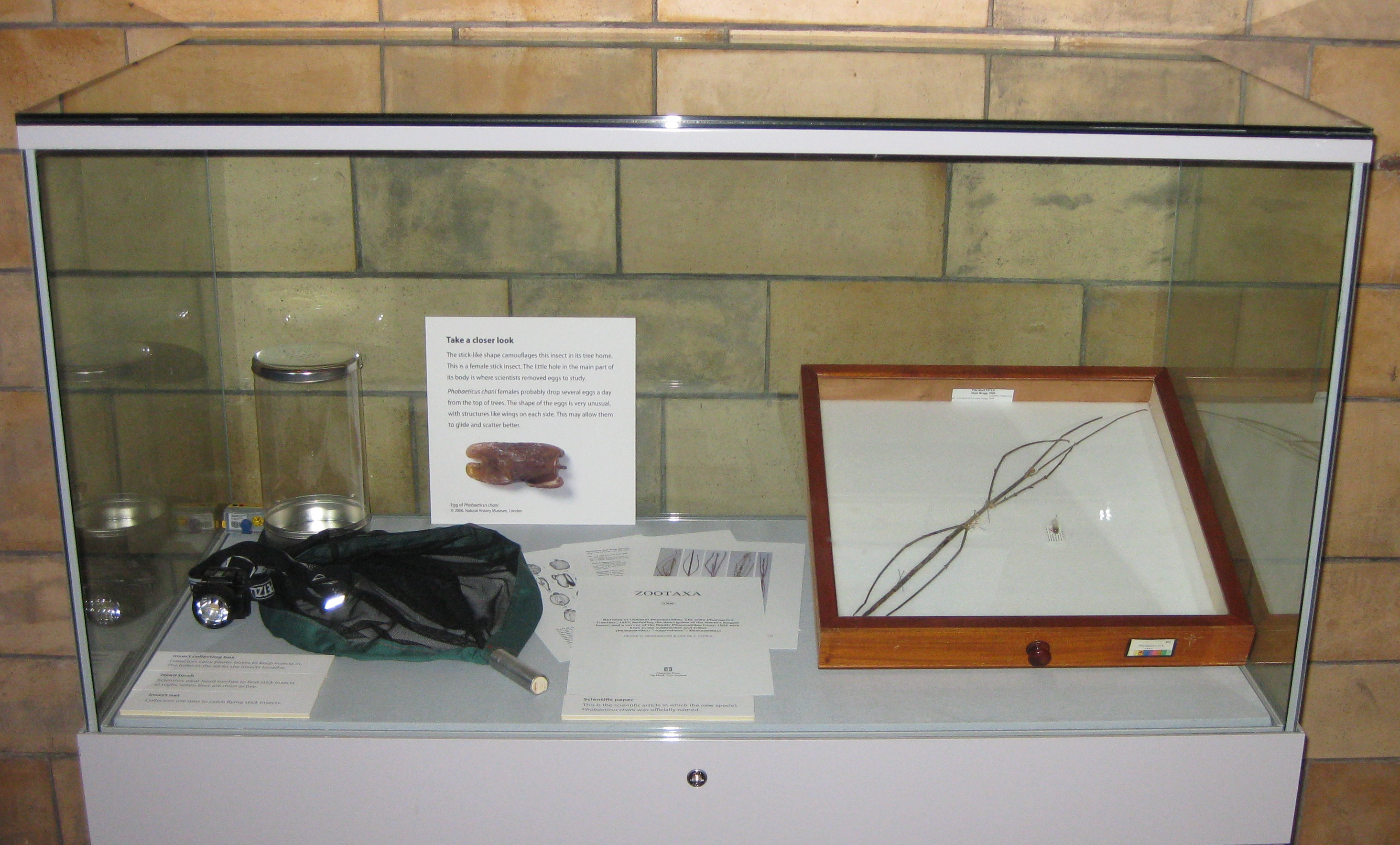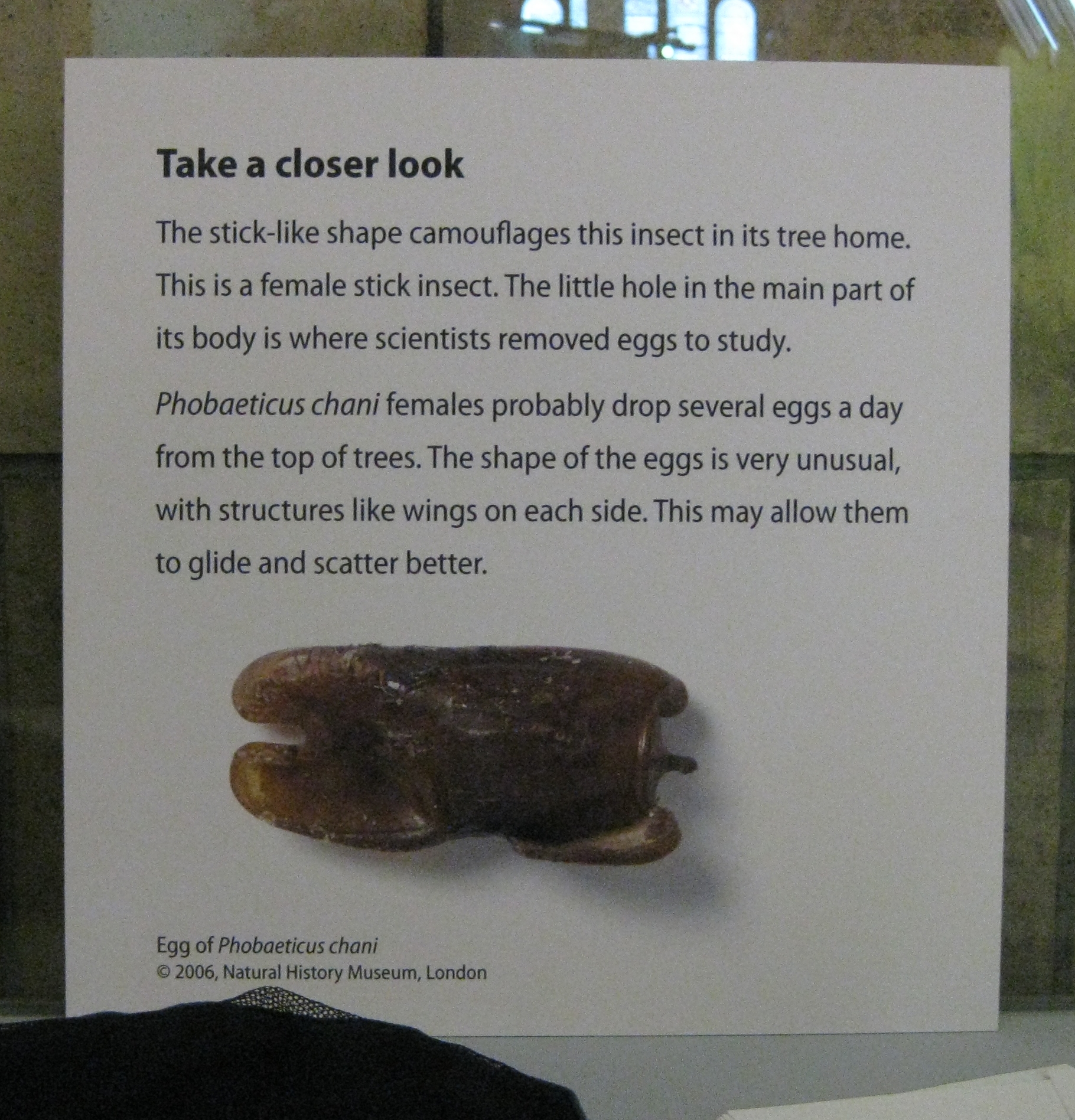World's Longest Stick Insect
The longest described stick insect in the world was described in 2008 in the journal Zootaxa by British scientist & Phasmid Study Group member, Dr Phil Bragg. The insect is called Phobaeticus chani after Datuk Chan Chew Lun and measures 357mm from head to end of abdomen. The previous record was held by Phobaeticus kirbyi, a closely related species.
First Reported
The discovery was originally posted on the Natural History Museum, London's website News section in October 2008, but the link is no longer available, so here is the NHM's report on the event:
"Datuk Chan Chew Lun donated the spectacular specimen to the Museum and you can see it on display in the galleries from today.
This species is new to science and has recently been named Phobaeticus chani (Chan's Megastick is the common name).
Only three specimens of the new insect have been found so far, all from the Malaysian State of Sabah on the island of Borneo. Datuk Chan obtained the first and largest known specimen (a female) from a local collector. The other two specimens are in collections in Sabah.
This specimen is more than 1cm longer than the previous record holder for overall length, which was a stick-insect called Phobaeticus serratipes found in Malaysia and Indonesia.
Not including its legs, Chan's Megastick measures 35.7cm, winning the insect world record for the longest body. It beats the previous title-holder, Phobaeticus kirbyi, from Borneo, by 2.9cm.
'We've known about both of the previous record holders for over a hundred years, so it is extraordinary that an even bigger species has only just been discovered,' said Dr George Beccaloni, stick-insect expert at the Museum.
Although virtually nothing is known about the biology and ecology of this super-sized insect, it is thought that it probably lives in the canopy of the rainforest, making it especially hard to find.
'It is a sad thought that many other spectacular insect species are disappearing as their habitats are destroyed, before we have even had the chance to find and name them,' George said.
Egg of the Phobaeticus chani stick-insect has wing-like extensions that allow it to drift in the wind.
In addition to its size, its eggs may also be unique in the insect world. Each egg capsule has wing-like extensions on either side like a miniature golden snitch, allowing them to drift in the wind when the female drops them, thereby helping the species to spread.
There are around 3000 known species of stick-insect, mainly living in the tropics and subtropics. Although they do not naturally occur in Britain, three species from New Zealand have become established in the south-west of England and the Isles of Scilly.
Once this specimen is removed from public display, it will join the Museum's 70 million other specimens, which scientists from around the world use to carry out scientific studies.
British scientist Dr Philip Bragg described and named this stick-insect and details are in the journal Zootaxa."
Specimen On Display
Here are photos of the impressive Phobaeticus chani specimen on display in the Creepy Crawlies gallery at the Natural History Museum, London. After this, the insect will be returned to the collections for study by scientists from around the world:


